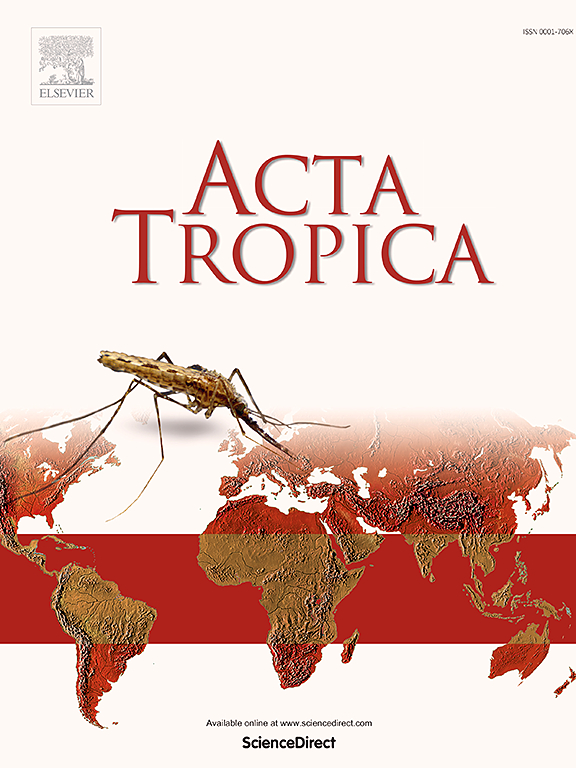Effects of Wolbachia on mitochondrial DNA variation in Aedes albopictus (Diptera: Culicidae)
IF 2.1
3区 医学
Q2 PARASITOLOGY
引用次数: 0
Abstract
Wolbachia species are symbiotic bacteria that are commonly found in arthropods and nematodes and live inside their cells. In nature, endosymbiont–host interactions and dynamics are complex, often depending on environmental conditions and evolutionary history. Both Wolbachia and mitochondrial DNA are maternally inherited in cells, and after a long period of coexistence, the presence of Wolbachia may have an impact on mitochondrial sequence diversity, thereby confounding mtDNA-based host phylogeny. The universal and typing primers for the wsp gene were used for PCR amplification, the number of positive samples was counted, and the infection pattern was analysed. The mitochondrial DNA diversity of four groups (Wolbachia-infected and uninfected samples, as well as between singly and double infected samples.) was analysed. PACo and ParaFitGlobal tests were used to explore evolutionary associations. The overall prevalence of Wolbachia in the 22 natural populations was 94.2 %, with Type A, Type B and A × B mixed infections detected in Aedes albopictus and coinfection between wAlbA and wAlbB prevalent. The mitochondrial DNA haplotype associated with Wolbachia (Hap1) became the dominant haplotype and was the most abundant and widely distributed in the population. The linkage map showed the predominant haplotype, Hap1, was more closely associated with wAlbA than with wAlbB. Neutral evolution deviated significantly from zero. The diversity of mtDNA COI genes associated with Wolbachia infection was reduced. Wolbachia infection may lead to the selective sweep of mitochondrial DNA in Ae. albopictus.
求助全文
约1分钟内获得全文
求助全文
来源期刊

Acta tropica
医学-寄生虫学
CiteScore
5.40
自引率
11.10%
发文量
383
审稿时长
37 days
期刊介绍:
Acta Tropica, is an international journal on infectious diseases that covers public health sciences and biomedical research with particular emphasis on topics relevant to human and animal health in the tropics and the subtropics.
 求助内容:
求助内容: 应助结果提醒方式:
应助结果提醒方式:


